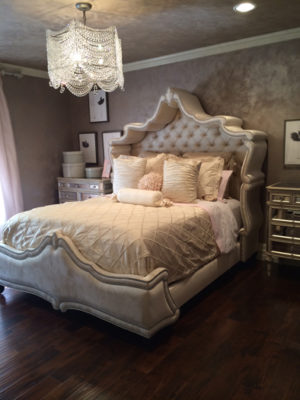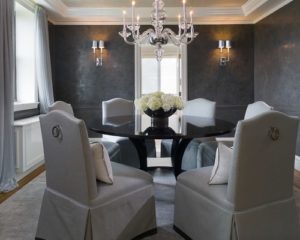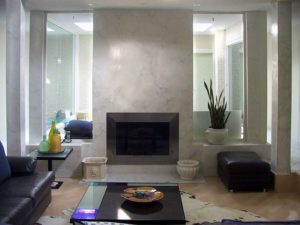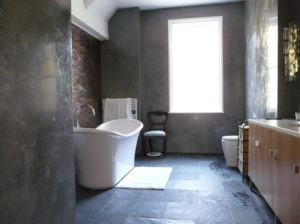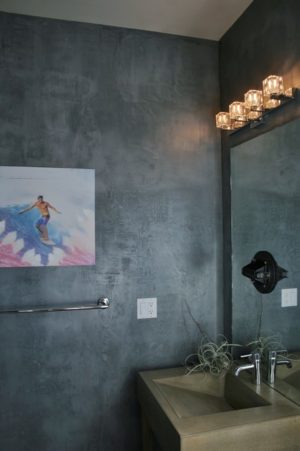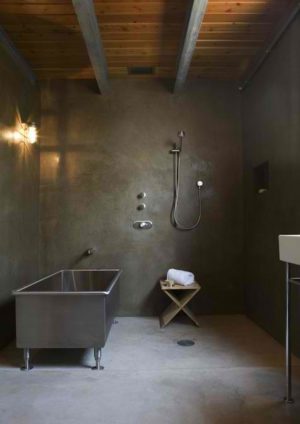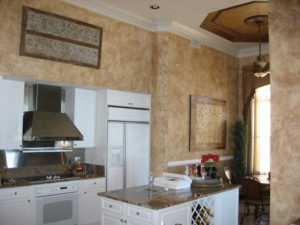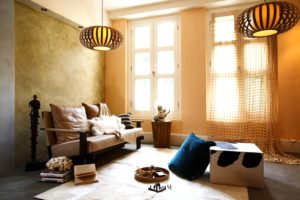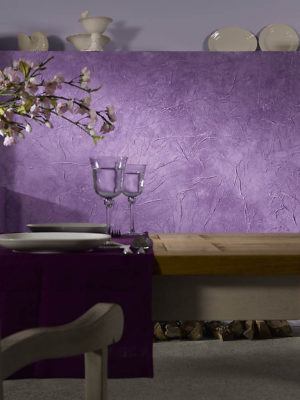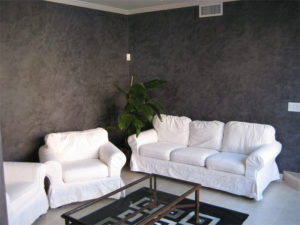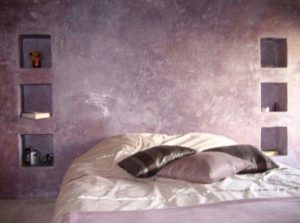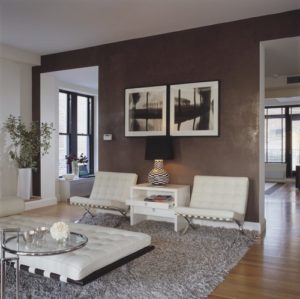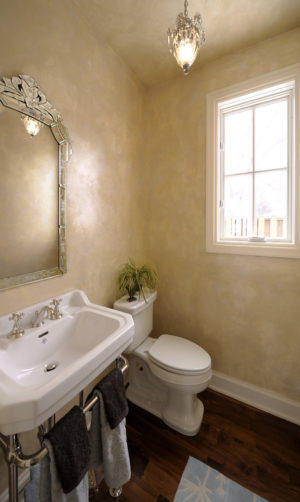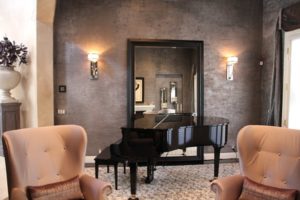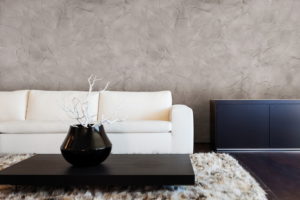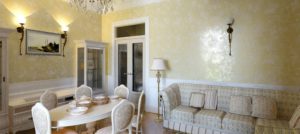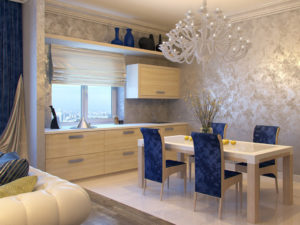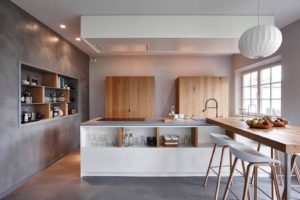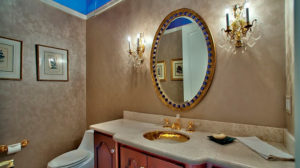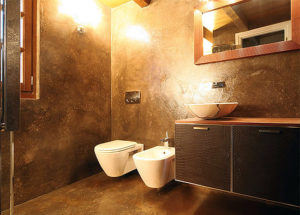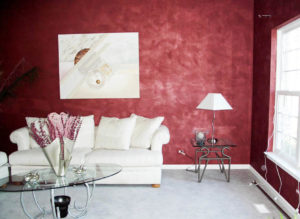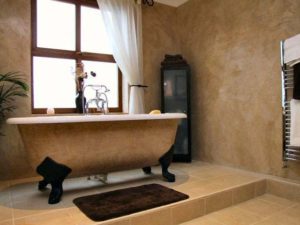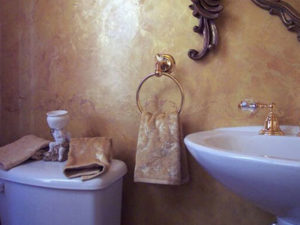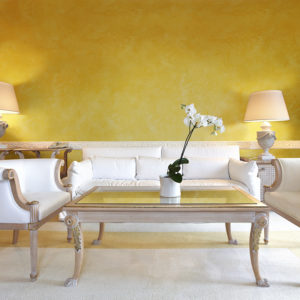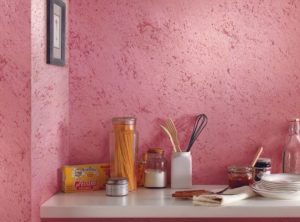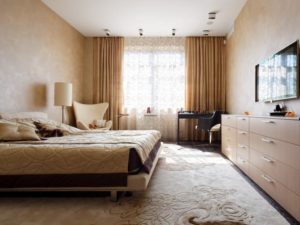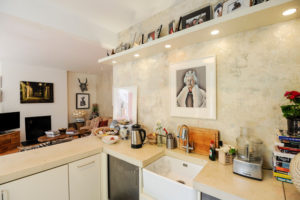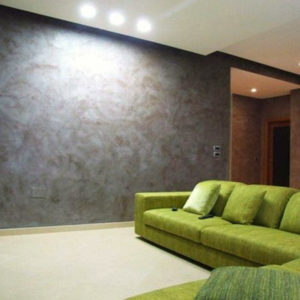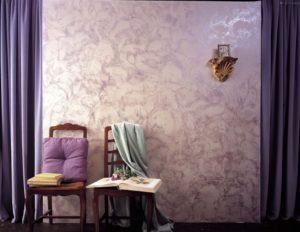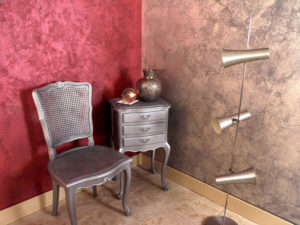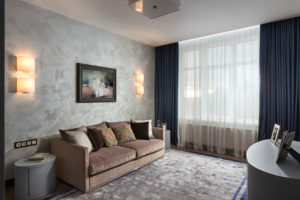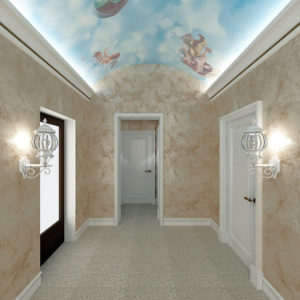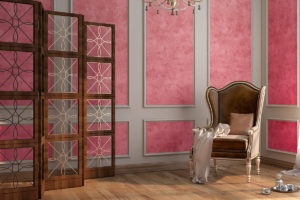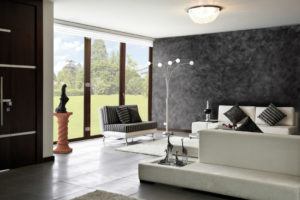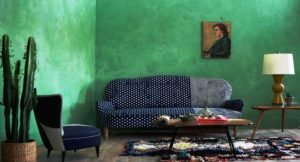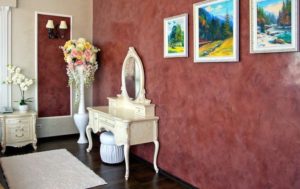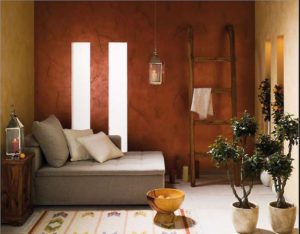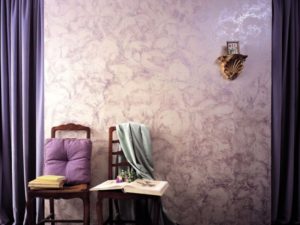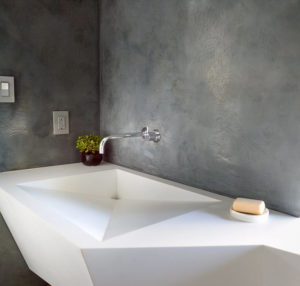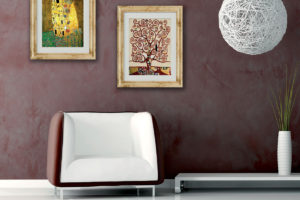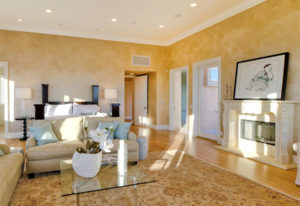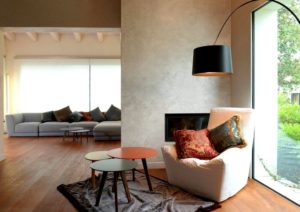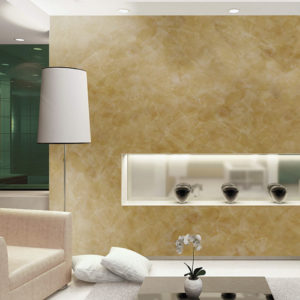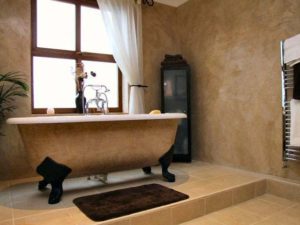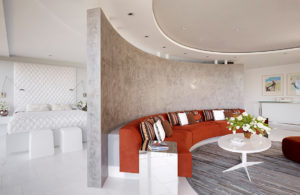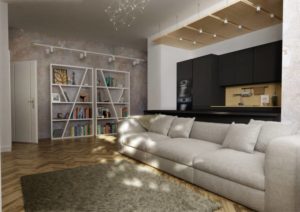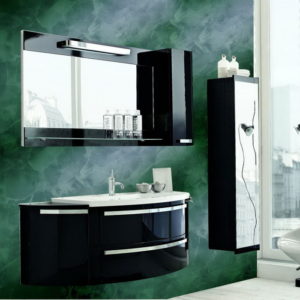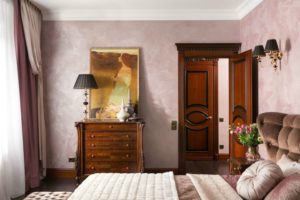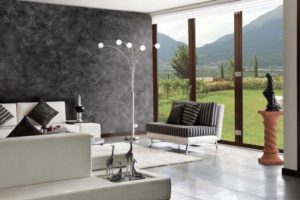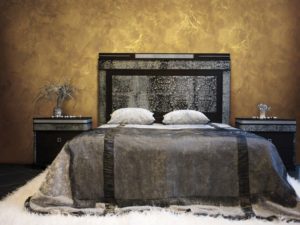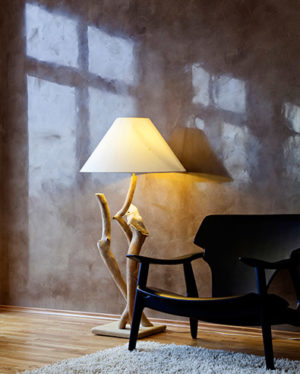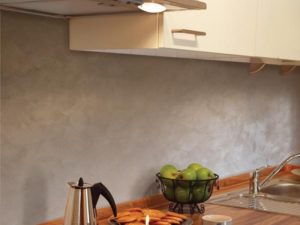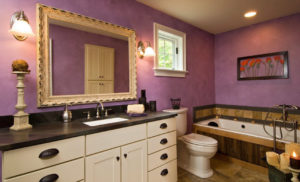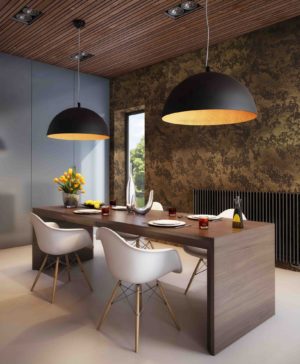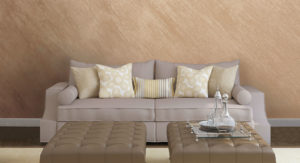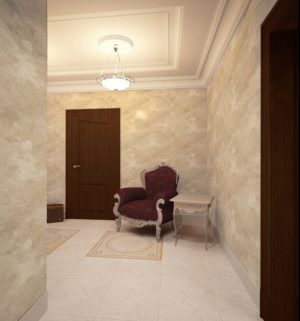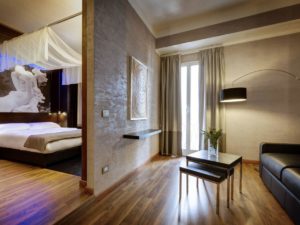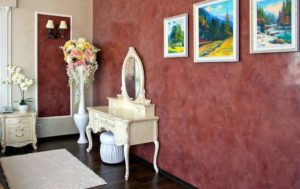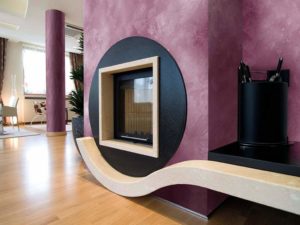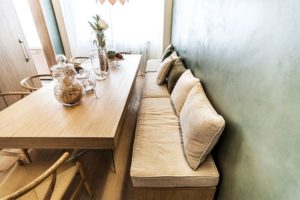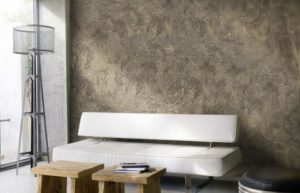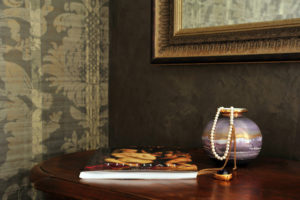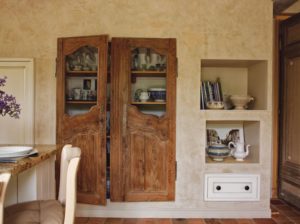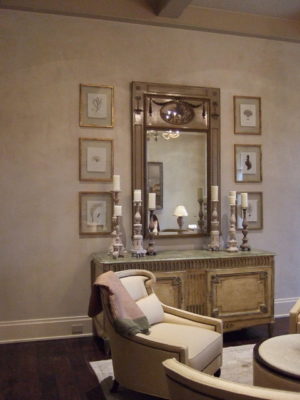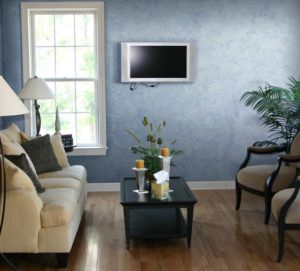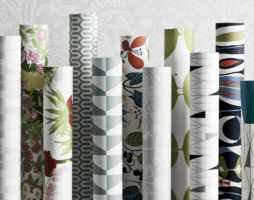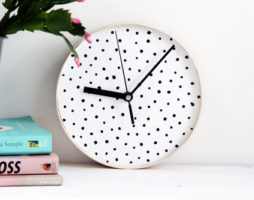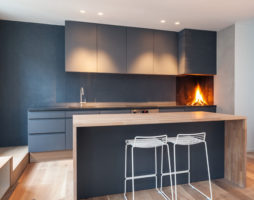Venetian plaster is one of the few finishing materials that have managed to reach us from such ancient times and at the same time not lose their relevance.
This type of finish is luxurious. It allows you to create really beautiful, rich-looking interiors, not only for living spaces, but also for official spaces. Galleries, ceremonial halls, theater foyers, offices are decorated in a similar way. The material carries with it the breath of eras, therefore it is relevant in stylistic interior solutions of any direction.

Venetian plaster will suit the interior in any style.
Recreating beauty has never been easy. Working with decorative plaster of this class, like no other, requires a professional approach. This doesn't mean you can't try DIY Venetian room finishing. This suggests that before you get down to business, you should thoroughly understand all the intricacies of the process. That's what we're going to do.
back to index ↑Venetian plaster, what is it?
Compound
You need to start acquaintance with decorative material from its composition. The main component of the mixture is stone flour. The Venetian with the smallest dust fraction will give the best aesthetic effect.
Stone dust is obtained from:
1. Granite.
2. Quartz.
3. Marble.
4. Onyx.
5. Malachite.
6. Limestone.
7. Valuable rocks.
Dust mixtures are often used
The second number in the composition are binders. Today, synthetic fillers, such as acrylic resins and polymers, have practically replaced slaked lime, which has not made the material less environmentally friendly.
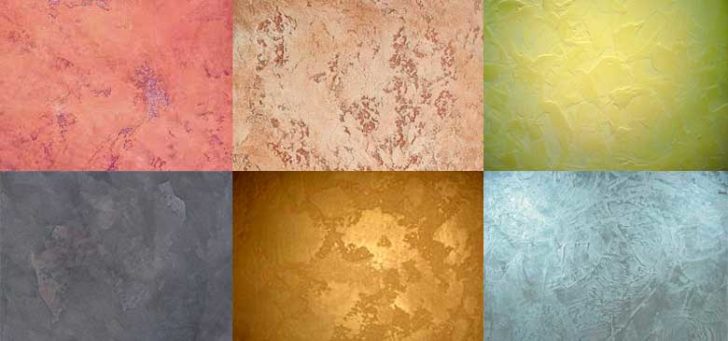
The pigment gives the plaster the desired color.
The last element of the decorative composition are pigments. They may be of organic or inorganic origin. They are added in order to give the mixture a certain shade and improve the quality characteristics in terms of UV resistance. The plastered surface is protected with wax. It adds aesthetics to the coating and prevents dust from settling on it.
Properties
Venetian - exclusively interior decoration. It is never used on facades, as the material is not resistant to being in an aggressive environment and the destructive effects of precipitation, fluctuating temperatures and other natural factors.
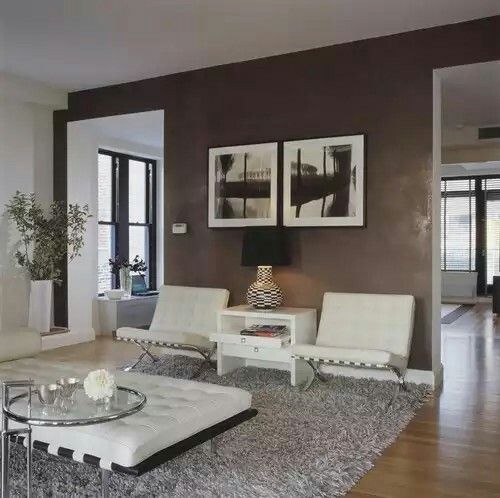
Venetian plaster is only suitable for interior decoration
Inside the house, with a favorable microclimate, Venetian plaster, even if laid by hand, has simply excellent performance. It is durable and can last more than ten years. Time only makes it stronger and better. The coating is waterproof, but at the same time vapor permeable. It is highly decorative and harmonizes perfectly with doors, windows and furniture in modern design.Unlike paint and wallpaper, Venetian stucco never peels off, peels off or falls off walls. The coating can be treated with mild cleaning agents that do not contain solvents or other aggressive components.
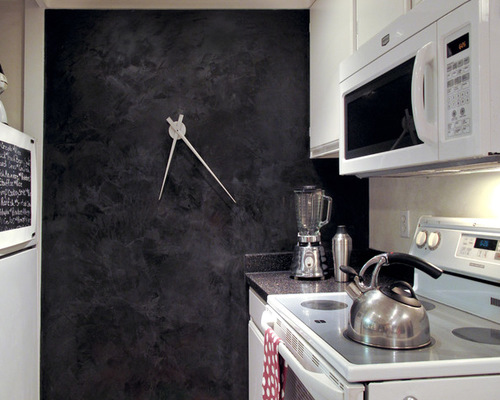
Venetian plaster has excellent performance
The material is fire resistant, does not exude foreign odors, and is environmentally friendly. If you want to change the decor of the room, you do not need to remove the finishing layer from the walls. Wallpaper and paint can be applied and glued directly on it.
The disadvantages are mainly the cost of the material, which can be quite high, as well as the high cost of work. If you can’t argue with the first, then you can save on the issue of hiring specialists. It is enough to do the decoration of the walls with a Venetian with your own hands.
One more moment. This type of finish is not elastic, therefore, subsidence of the walls is fraught with the appearance of a network of cracks along the plastered layer, which cannot be corrected and repaired. This gives rise to the need for careful preparation of surfaces for decoration.
Kinds
Decorative plaster from the Venetian category is presented today in the widest variety. On the shelves there are goods of both domestic and foreign production.
What types of Venetian are most in demand?
Trevignano
When applied to the wall, the coating looks illuminated from the inside. The unique effect is achieved by the translucency of the layers and the play of colors. Externally, the coating is similar to travertine or mirror marble. Finishing with a vintage effect, so a frequent visitor to vintage and classic interior solutions. Perfectly harmonizes with aristocratic frescoes.
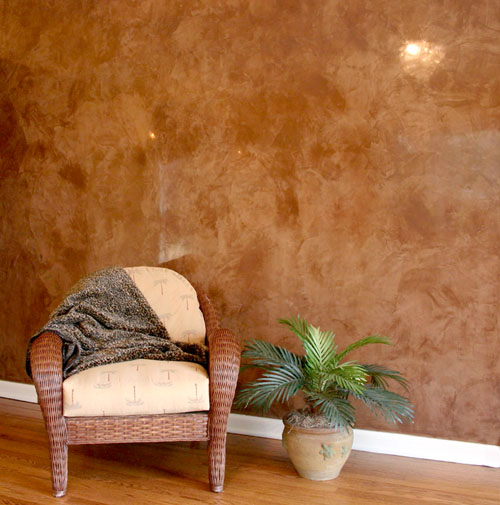
Venetian plaster Trevignano
Veneto
The most common type of Venetian plaster for do-it-yourself work. The composition is easy to apply, not picky about operating conditions, easy to maintain, and has an attractive cost. When finished, it looks like polished matte marble.
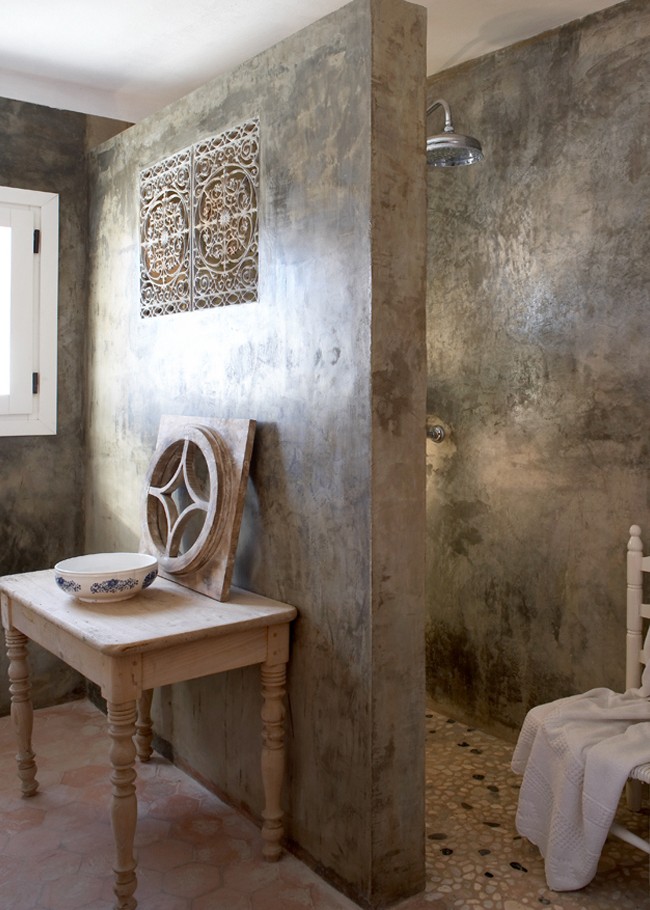
Veneto - the most common type of plaster
Marbello (Mardello)
“Venetian plaster of this brand is in demand in the decoration of rooms for a specific purpose, characterized by a humid microclimate”
Although the surface obtained after plastering resembles roughly hewn marble, it looks very nice. A velvet wall with a web of polished glossy veins attracts with a play of shades, the appearance of which is facilitated by the slightest change in lighting.
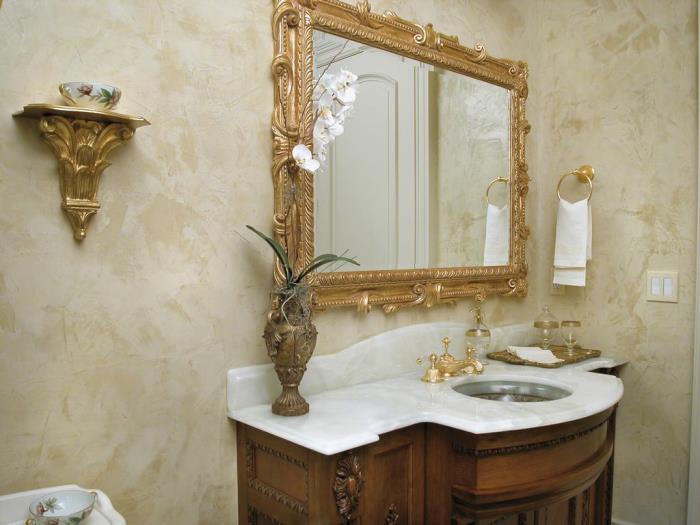
Venetian plaster Marbello in the decoration of the bathroom
Venetian plaster of this brand is in demand in the decoration of rooms for a specific purpose, characterized by a humid microclimate.
Imperiale
One of the latest developments. The composition of the plaster contains a gold pigment. This allows the decorative coating to play not only with sun glare, but also delight the eye with the luxury of gold glitter. The resulting surface is translucent and can have a dozen shades, which fully confirms the association of marble with a "shining stone".
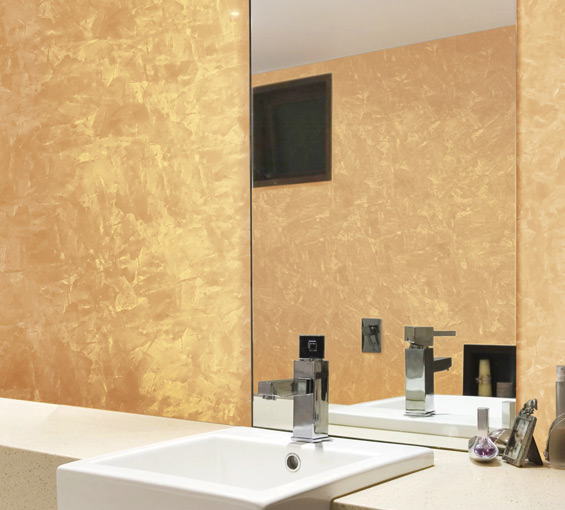
Plaster Imperiale with gold pigment
Encausto (Encausto)
This kind of Venetian allows you to get a decor that imitates granite. The semi-matte surface is full of dark blotches. An option that requires good protection, therefore, it is necessarily covered with a layer of wax, which will have to be updated periodically. This will increase the resistance of the finish to moisture.

Encausto plaster allows you to get a decor that imitates granite
Venetian plaster in the interior style
"Venetian plaster is easily combined with other types of finishes"
Decorative plaster is versatile. Due to the beauty, environmental friendliness and practicality of the coatings obtained with its help, it “fits” into almost all styles.The material allows you to create the appearance of not only wall cladding with expensive and noble stone, but also luxurious fabric. Finishing will give the setting an aesthetic perfection, even if the Venetian plaster is applied by hand with minor flaws.
Such wall decor will be indispensable in baroque, empire, rococo. It will be an excellent background in classicism. A reflective, effectively plastered surface is also an option for modern trends: art deco, avant-garde, minimalist interiors, hi-tech.
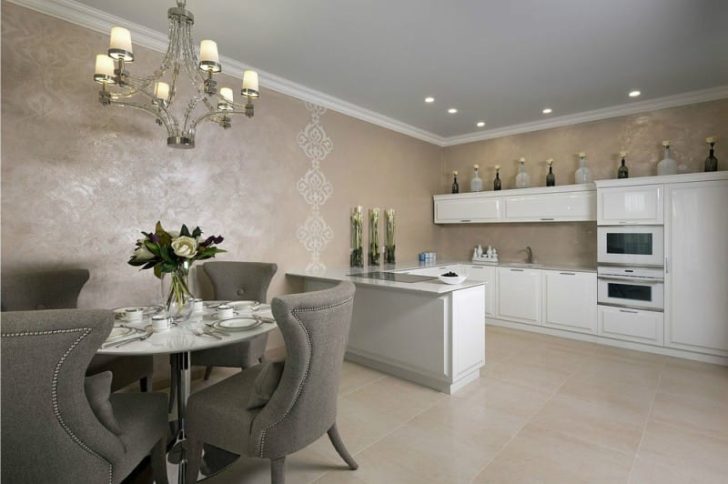
Venetian plaster for the interior in a classic style
Relief plaster is the best solution for castle styles with ethnic features of Gothic or Romanism.
The list goes on, as Venetian plaster is easily combined with other types of finishes. This allows the material to be used in such difficult-to-reproduce styles as loft, Mediterranean.
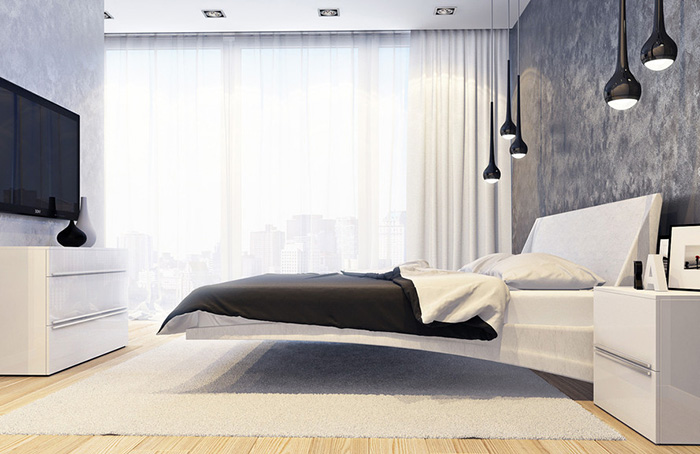
Venetian plaster in the interior in a modern style
It can become the basis for frescoes or organic panels. This move allows designers to bring a touch of majesty to the setting. Rumor has it that Raphael himself painted the walls on the plastered surface in this way.

Venetian plaster can become the basis for a fresco
Do-it-yourself Venetian plaster
In work, structural mixtures are complex and finicky, but they will still remain in demand for centuries, as they allow you to create truly individual interiors with a unique style and color.
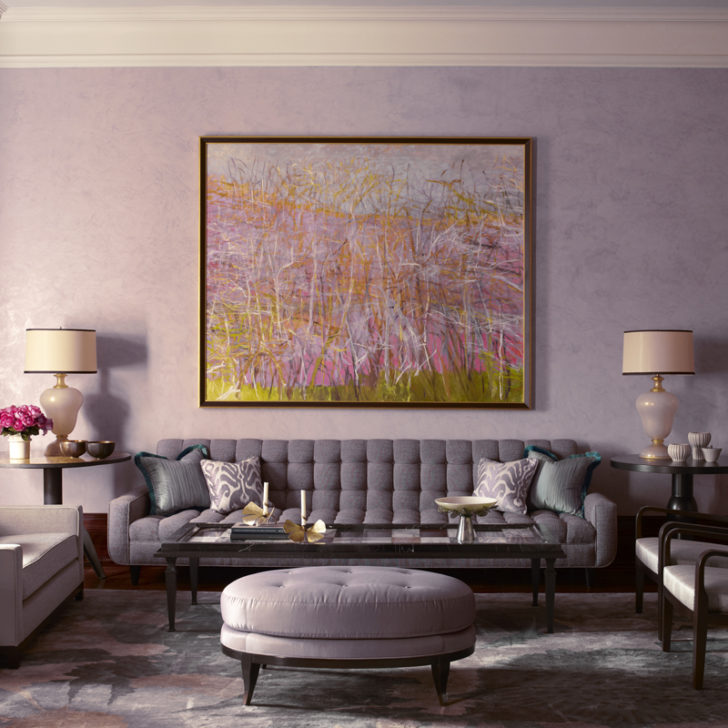
Venetian plaster will create an interior with a unique style
Venetian has sufficient plasticity, so its application does not cause difficulties. It is much more difficult to get the surface of the required texture, since it will require the ability to correctly apply layers and select shades. Having certain skills in such work, you can experiment with the material without any restrictions, which means you can create decorative coatings in the most creative ways.
Preparing the walls
Since Venetian plaster is a finishing finish, it is performed only after installing windows, doors, removing construction debris and laying flooring. Work is carried out on a previously prepared wall surface. What is important in such preparation.
If previously decorated walls are to be finished, then the existing finishing layer should be removed: clean off paint residues, remove wallpaper, remove putty residues. Cleaned areas are dedusted. It is better to do this with an industrial vacuum cleaner.

Before applying plaster, the walls are cleaned of dust.
Examine the wall. If there are oily areas, they must be degreased. The process technology is simple. The stain is treated with a solvent and the place is washed with a mild soapy solution.
A dry, clean base for a Venetian is primed with a solution with a firming or water-repellent effect. In wet areas, an antifungal primer is additionally used.

The wall under the Venetian plaster is primed
The next preparatory step for decorating with Venetian plaster with your own hands will be the elimination of cracks. If there are similar damages on the wall, they must be embroidered along the entire length, cleaned, primed and filled with a corrective composition. After the mixture dries, the repaired areas are overwritten.

Repair all the flaws on the walls
If the Venetian plans to finish the overhauled and freshly plastered walls, then the surface will need to be allowed to stand for at least a month after such work.
Decorative process technology
Working with Venetian plaster, in most cases, is the prerogative of professionals. It will be difficult for builders and house painters to cope with such technology, but with desire and perseverance, they can also get excellent results.
The easiest way to reproduce marble imitation in a home interior. To ensure the durability of the decor, be sure to apply it on a primed surface. In our case, the best option would be priming compositions with fine quartz sand.

To ensure durability, apply plaster on a primed surface
When doing wall coverings with Venetian plaster with your own hands, do not hesitate to consult with sellers about which types of soil are best suited to your chosen plaster. In the store it is worth ordering the tinting of the finishing material. To achieve the desired shade "by eye" is extremely difficult. If you do not guess with the amount of pigment, you can ruin expensive material and repairs in general. In the case of computer tinting of structural plaster, such "misfires" are excluded. For the case under consideration, a Venetian plaster of two colors is required. One part should be lighter than the other.
Let's get back to priming. The primer is applied to the wall with chaotic movements, short strokes. Make it a tough maklovitsa. The treated wall is allowed to dry. This usually takes 6 to 12 hours.
At the second stage of working with a Venetian with your own hands, you will need:
1. Good quality steel trowel (preferably polished stainless steel).
2. Spatula.
3. Wet rags.
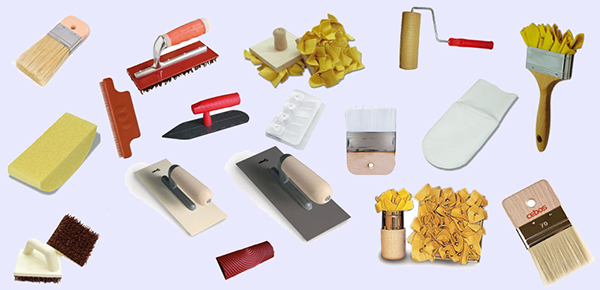
Tools for applying Venetian plaster
Theoretically, the workflow looks even primitive. With a type-setting spatula, a little ready-made mixture is applied to the trowel and transferred to the wall with short movements. Here lies the first practical difficulty. The mixture must be able to distribute extremely thinly over the surface. This effect can only be obtained by holding the trowel correctly. The tool must be placed almost perpendicular to the wall and pressed strongly against it during operation.
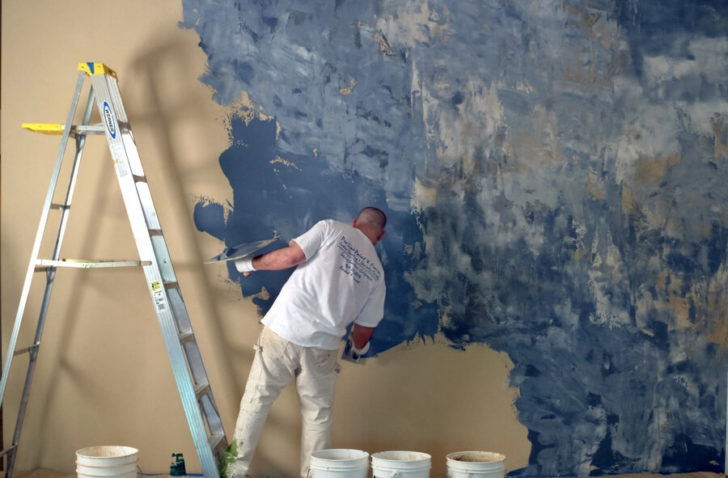
The process of applying Venetian plaster
The next subtlety of working with Venetian plaster is the location of the strokes. If the first was made in a horizontal plane, then the second should have a direction perpendicular to it. Further work is carried out in the same vein. In this way, various drawings, semantic pictures can be created, but this will become possible only with the advent of experience.
In the case of obtaining the effect of a marble surface, the task is to cover the entire wall with such chaotic strokes of the Venetian. Work is being done in sections. You can’t start decorating one wall and, without finishing work on it, move on to the next. The plastered wall is left to dry for at least 6 hours.
Applying the second layer is the next underwater reef that must be properly bypassed when working with Venetian plaster with your own hands. It should differ in shade and be a tone brighter or duller than the previous one. Finishing with structural plaster can have both 5 and 12 layers. All of them are performed according to the described principle.
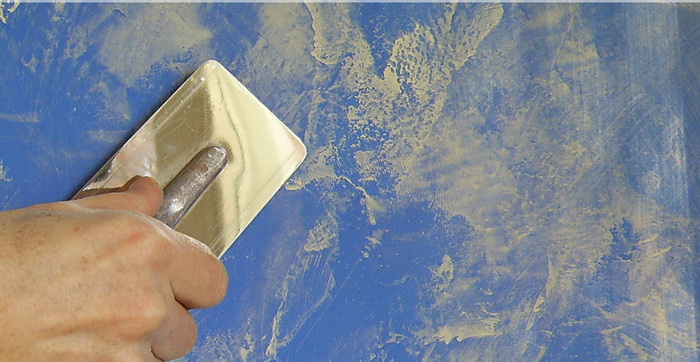
Application of the second layer
The last, that is, the final one, will have to be ironed. To do this, after plastering each square, you will need to go back to the already clinging surface, and pressing the trowel strongly against the plaster layer, smooth it out. The trowel should lie almost flat on the wall. With each movement, the area will become more and more mirrored. The last decorative layer is subjected to such processing.
To give the decor a color depth, silver or golden Venetian plaster can be applied on two, almost monochromatic layers.
The final touch will be the processing of the resulting decor with wax.
How to Wax a Venetian
The wax composition is more convenient to apply with a flexible spatula. It can be successfully replaced by an ordinary foam rubber sponge. Wax slightly levels the surface by filling small pores. To give the wall a special decorative effect, a wax composition mixed with a golden or mother-of-pearl color scheme will help.

Application of the wax composition with a flexible spatula
Do not apply wax in thick layers. This will result in spots. The wax layer, when working on wall decor with Venetian plaster with your own hands, is polished after drying. The process is not mechanized. Here you also have to work manually. It all comes down to rubbing the surfaces with a suede cloth. This is done in a circular motion.
Now you can talk about the completion of finishing work and admire the result.
The thin film formed during waxing of the surface will change the angle of refraction of the light fluxes, which will give rise to a 3D effect. The wall will no longer appear flat and will lead the eye inward.
Craquelure technique
Today, interiors with an influx of antiquity are fashionable. To achieve a similar effect, a special varnish is applied over the layers of Venetian plaster. This is a slowly drying composition, which, in the process of solidification, seems to tighten the plaster, covering it with a network of noticeable cracks. The latter are purely decorative. They are superficial and do not affect the strength and durability of the finish in any way, they only add gloss and charm to the environment.
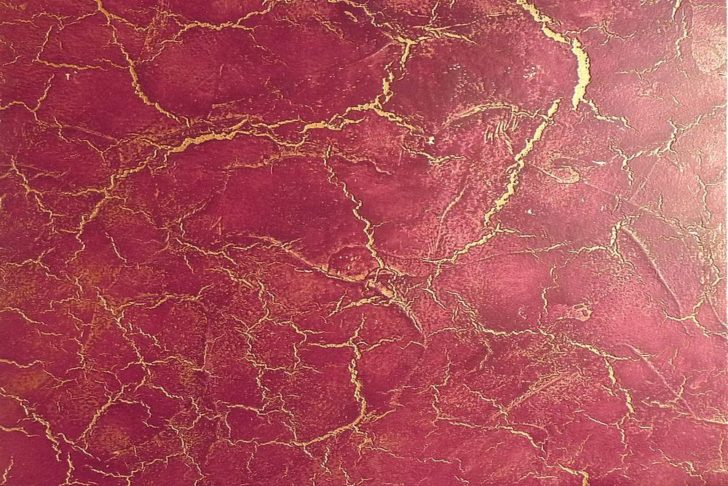
Craquelure technique
Carrara marble
Incredibly effective surface. It is created by applying large numbers of layers of differently colored Venetian. The play of shades on the wall surface will create the illusion of decorating a room of the rarest beauty with Carrara marble. Today it is practically not mined, but it will not cost you anything to create its interpretation within the walls of your home.
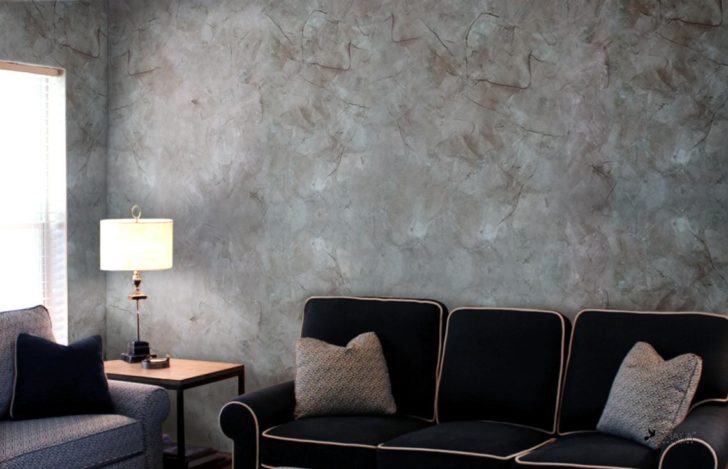
Carrara marble effect
Naturally, you will have to tinker, especially when working with Venetian plaster with your own hands, and not entrusting the process to a professional, but the result will be amazing. From the wall designed in this way it will be impossible to take your eyes off. And no matter how much you paid for consumables, the interior will look very expensive.
Marseille wax
A composition that opens up unlimited scope for the use of the Venetian. Its presence in the mixture will make it possible to use the material in the decoration of rooms with the most difficult and unpredictable microclimate, for example, in a kitchen or a super wet bathroom. You can forget about boring tiles and create in the rooms the atmosphere that you want, and not that you are forced to reproduce by interior circumstances.
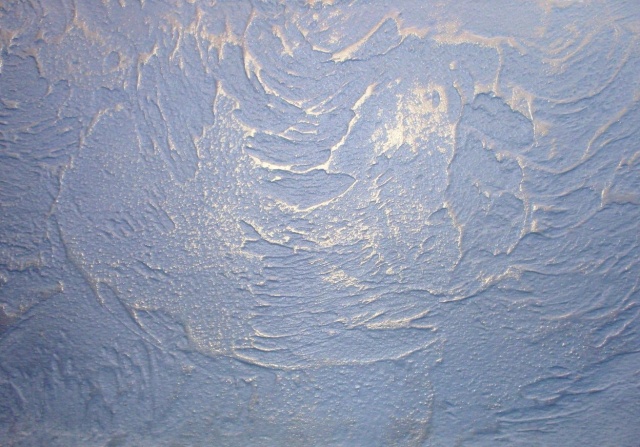
Marseille wax effect
Nuances of working with Marbella
This composition belongs to the quick-drying composition, therefore, it is highly undesirable to work with it alone, especially if you first took up the decor with Venetian plaster with your own hands. Having applied the first base layer of a given thickness, you should immediately work on it with a spatula in order to have time to create a chaotic pattern even before the plaster surface sets. As a result, the effect of a slight influx should appear. The strokes of the next layer should completely overlap the strokes of the bottom layer. Finishing plastering is carried out with a light composition of the Venetian. This gives the finish depth.
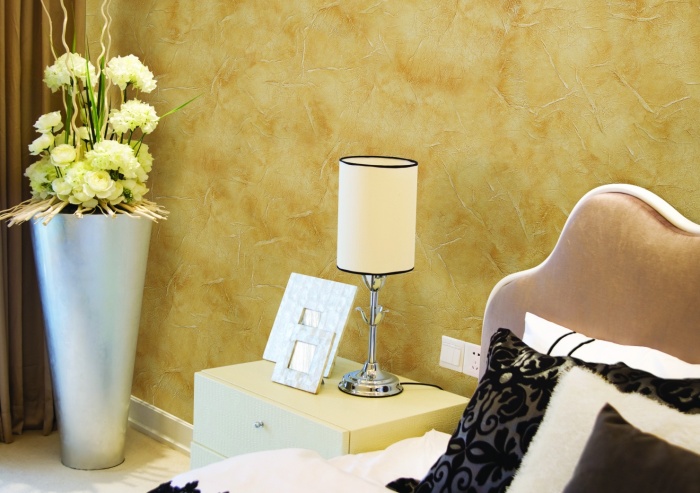
Marbella in the interior
Polishing begins at least a day after completion of work. The specularity of Marbella is given with a hard spatula. It is easier and more convenient for them to draw faces and make them play in the light rays. From this type of Venetian plaster, coatings are obtained that imitate the texture of moire.
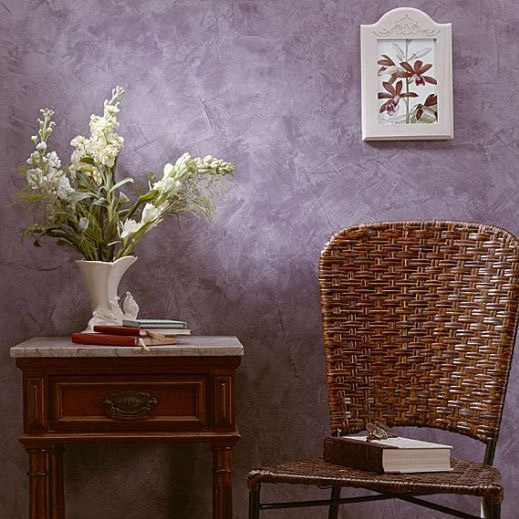
Moiré texture finish
A few practical tips
Tool Requirements
To decorate the walls with Venetian plaster with your own hands, you will need a specific tool. You can't skimp on this point. Be sure to purchase spatulas, trowels and graters made of forged or polished stainless steel. Rubbing the composition on the wall with standard tools made of ordinary metal will lead to the chipping off of metal chips by solid dust particles of the stones contained in the working mixture.The latter will leave unpleasant dirty stripes on the decorative surface.
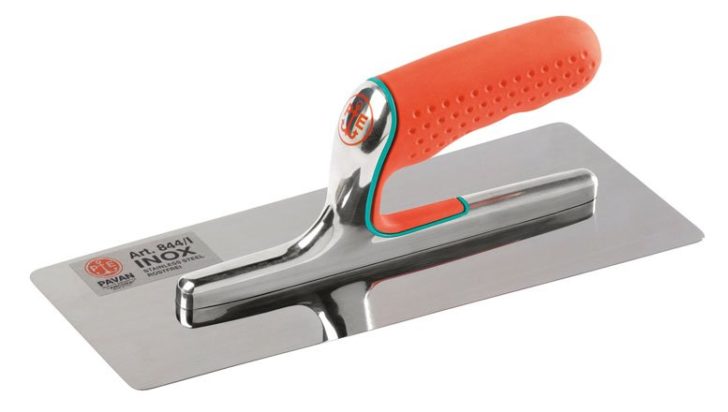
Use a stainless steel tool
Painting features
Working as a Venetian in engineering frescoes or when creating a color panel, paint on a wet, not set layer. Paints should be special pigments from a series of those used to color the compositions of the base itself, that is, Venetian plaster. Such paints will penetrate through all layers of plaster and will never be erased, nor will they lose their color.
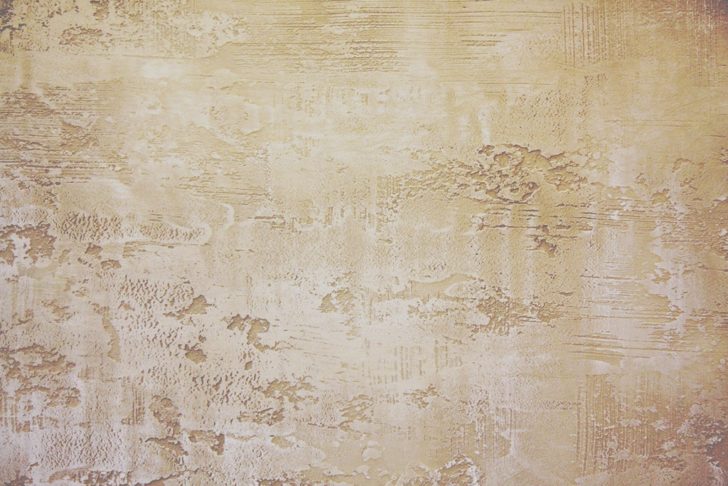
Do fresco painting on a wet layer
Color
It is not difficult to colorfully apply a Venetian with your own hands over the entire surface of the wall. In this case, there can be any color solutions: from soft blurry overflows to contrasting geometry. Walls look good with a golden sheen, the effect of a butterfly flight.
back to index ↑Conclusion
Venetian plaster is by no means a material of mass use. It is underlined by an elite finish. Her chosenness lies in the individuality of each wall fragment, each fresco created with her help. The color nuances created during the work cannot be designed or copied in the future, so the Venetian finish is an opportunity to give the room a truly unique image. Don't miss the unique chance!
back to index ↑Photo gallery - Venetian plaster
Video
